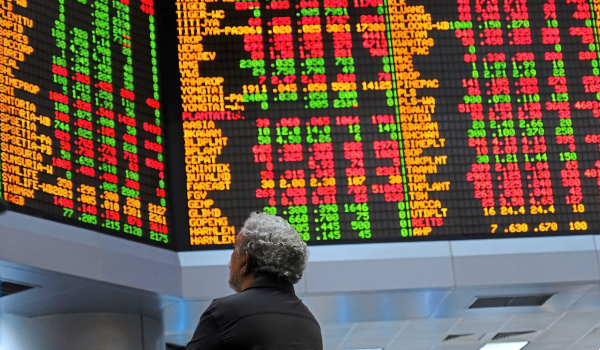THE banking industry’s loan growth increased to 3.9% in February (January: 3.5% yoy) compared to 5% in February 2019. According to AmInvestment Research, the spike was due to higher non-household loan growth of 3.2% yoy (January: 2% yoy) which marked an increase of 1.2% on a month-on-month basis supported by lower repayments.
Outstanding household loans grew slightly slower at 4.4% yoy in February (January: 4.5% yoy) or a decrease of 0.1% on a month-on-month basis. Growth of disbursements outpaced repayments in February.
Moving ahead, the research firm expected loan growth to taper. “This is due to the Covid-19 outbreak impacting businesses which are likely to result in a drop in loan demand,” said AmInvestment Research.
It expected banks to be less aggressive in expanding their loan books ahead. Financial institutions are likely to focus on actively restructuring and rescheduling the loans of borrowers impacted by the pandemic.
It said automatic moratoriums to individual and SME borrowers to defer their repayments by six months will prevent loans from falling into to impaired status significantly after the end of the moratorium.
Banks are expected to face further headwinds on banks’ interest income with potentially another rate cut of 25 basis points (bps) in May 2020.
Following the announced overnight policy rate (OPR) cut of 25 bps on Jan 22, the sector’s weighted average lending rate declined further to 4.98% in February while the weighted average base rate was unchanged at 3.43%.
The base lending rate (BLR) dipped 2bps to 6.48% compared to 6.5% in January 2020. In March 2020, the BLR, weighted base rate and average rate will decline further as Bank Negara Malaysia (BNM) lowered the OPR by another 25 bps to 2.50% on March 3.
The average deposit rate (the average rates for fixed deposits (FD) of up to 1-year tenure) fell to 2.70%. Interest spread (the difference between weighted average lending rate and average FD rate) decreased by 1bps to 2.28%. Net interest margins (NIMs) of banks are seen to be compressed in 1Q20 owing to the two OPR cuts.
Deposit growth eased slightly with a stable loan-to-deposit (LD) ratio of 89%. Industry deposit growth shrank slightly to 2.8% yoy. Growth of deposits from individuals moderated to 5% yoy while those of business enterprises registered a higher contraction of 1.1% yoy compared to -0.9% yoy in the preceding month.
AmInvestment Research said the industry’s total gross impaired loan (GIL) ratio was sustained at 1.6% while the net impaired loan (NIL) ratio was steady at 1.01%. It has maintained its neutral call on the sector with a downgrade for Alliance Bank Bhd to hold from buy.
This is because its share price has surged to the research firm’s fair value (FV) of RM1.90 per share. Its top picks are Maybank Bhd (FV: RM8.60 per share) and RHB Bank Bhd (FV: RM5.80 per share).
It also recommends Hong Leong Bank Bhd (FV: RM15.90 per share) for its strong security coverage for loans, low foreign shareholdings of 10.7%, faster recovery from OPR cuts and its valuation, which is now trading at a low FY21 PB/V of 0.9x, well below the 2008–09 trough valuation of 1.5x P/BV.
Meanwhile, MIDF said it was positive on the banking sector. It had factored in the impact of Covid-19, the loan moratorium and MCO will have on banks’ profitability in its assessment.
However, it believed that the moratorium and other measures announced by BNM are positive for the banking sector as it addresses the issue of asset quality and liquidity, and to a certain extent the cost of funds. It provides much breathing space for the banks.
The research firm added that this will ensure banks’ profitability remains intact despite the current headwinds. Its top picks are Maybank (TP: RM9.55), CIMB (TP: RM5.70) and Public Bank (TP: RM19.00). – April 1, 2020








